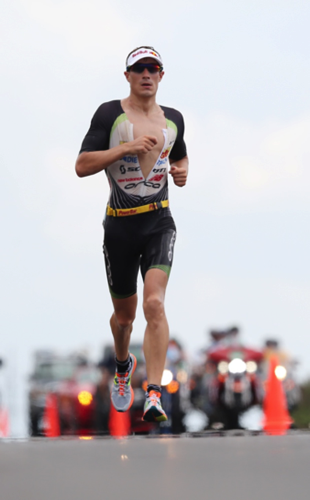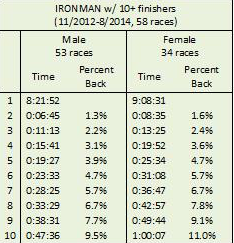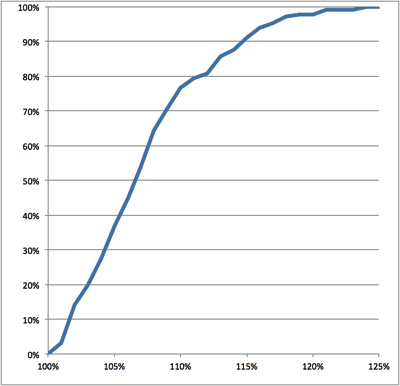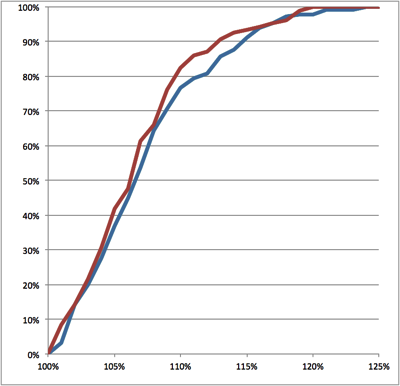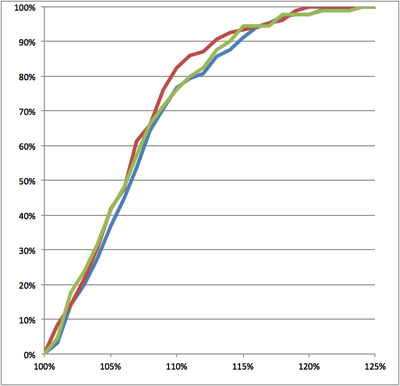Depth in Women’s Field – Changes over the Years
Late last year, I’ve looked at data concerning the depth of the women’s field and comparing that to the depth of the men’s field. (If you haven’t read it yet, please check out my post “Women’s Field as Deep as Men’s?“.) I have to admit that I was a bit surprised that I wasn’t finding any noticeable difference in recent year’s. My first interest into triathlon was in the late 80’s when Paula Newby-Fraser was such a dominating force in the sport that she seemed to win almost at will and if there was only an Erin Baker on a good day who was able to challenge her.
This led me to have a look at some older data – maybe the depth of the women’s field has improved over time? I wasn’t able to produce the same type of graphs that I used in my previous post as I just don’t have the data. However, I was able to find a list of the top 10 finishers on Slowtwitch (Top Ironman Hawaii Finishers Archive) that I used as my basis for a similar analysis. As a measure for the depth of the field I am using the Top 10 degradation, defined as the cumulative time the Top 10 finishers were behind the winner in each year (for example, in 2014 the Top10 men were 1h24min behind the winner, while the women were 2h01min behind). In order to reflect the different winning times for men and women, I’m calculating the percentage of this sum of the winner’s time (still using 2014 data, 17% for the men, 22.4% for the women). Please note that this measure doesn’t reflect the different field sizes (that lead to increased time differences) – meaning that a similar depth of field would have a larger Top 10 degradation for the women.
Here’s the graph showing the development of the Top10 degradation in Kona over the years for the men (blue line) and women (red line):
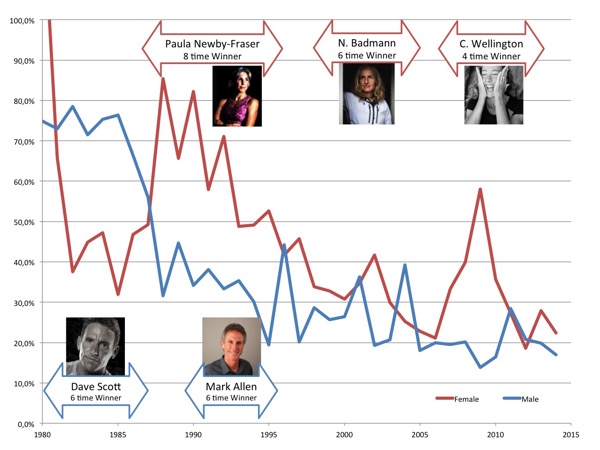
In order to give context to the time periods, I’ve added some of the biggest Kona winners. Here’s my interpretation of this data:
- Dave Scott was dominating Kona early on, his six wins were between 1980 and 1988. He was head and shoulders above most of the other Kona athletes and the degradation is at the highest level we have for the men.
At this time, the degradation for the women is actually lower than for the men – but this is probably more a sign that even the women’s top racers were still finding their way in this new sport. - This changes with the start of winning streak by Paula Newby-Fraser (her first Kona win was in 1986, her eighth and last was in 1996), she was dominating at similar levels to Dave Scott.
- After Dave and Paula, Mark Allen and Natascha Badmann both won six Kona crowns, but they didn’t dominate the fields as much. (This probably makes their winning streaks even more impressive as they managed to win a lot of close races.)
In the early 2000s, the Top10 degradation numbers were pretty much the same between the men and women. - This changed for a while when Chrissie Wellington won her four Kona titles. In 2009 her third win displayed a domination over the rest of the field comparable to what Paula showed.
- In the last few years, the Top 10 degradation between men and women is back at very similar numbers.
My conclusion of this data: In the early years of our sport, it took some time to develop a decent depth of the field. The men’s field improved first (until the late 80s – at the end of the Dave Scott era), and the women’s field took about ten years longer (until the late 90s – the Natascha Badmann era). Certainly, things have changed a lot since the days of Paula Newby-Fraser – it now takes an absolutely dominating figure such as Chrissie Wellington to „disrupt“ the numbers. Chrissie pushed the women’s field another big step forward, and these days the Top10 degradation indicates no different depth between the men’s and women’s field.
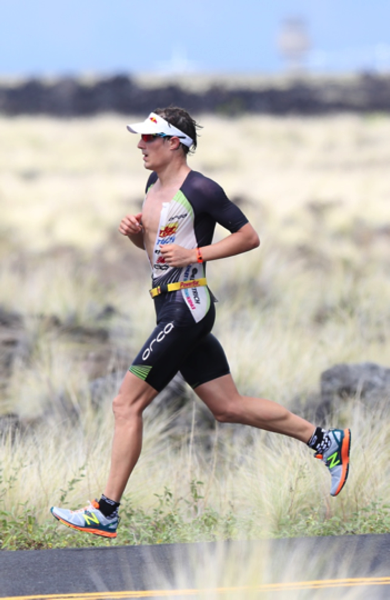 Clearly, Sebastian Kienle had a dream year on the Ironman distance, winning in Frankfurt and in Kona. His only disappointment was the 70.3 World Champs – but of course that doesn’t influence his IM rating which he improved by almost 10 minutes! He is my new #1 rated athlete.
Clearly, Sebastian Kienle had a dream year on the Ironman distance, winning in Frankfurt and in Kona. His only disappointment was the 70.3 World Champs – but of course that doesn’t influence his IM rating which he improved by almost 10 minutes! He is my new #1 rated athlete.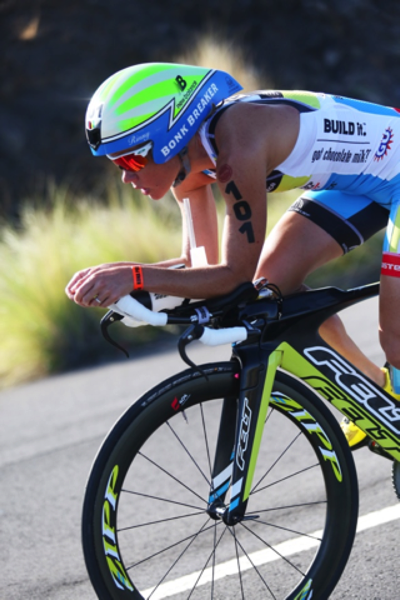 Mirinda Carfrae continues to be the clear #1 female athlete. She had another phenomenal Ironman-year: Winning Roth in the fastest time of the year and then defending her Kona title with an epic come-from-behind run, improving her rating by almost 13 minutes! She’s leading by ten minutes, but can she have another year like this?
Mirinda Carfrae continues to be the clear #1 female athlete. She had another phenomenal Ironman-year: Winning Roth in the fastest time of the year and then defending her Kona title with an epic come-from-behind run, improving her rating by almost 13 minutes! She’s leading by ten minutes, but can she have another year like this?